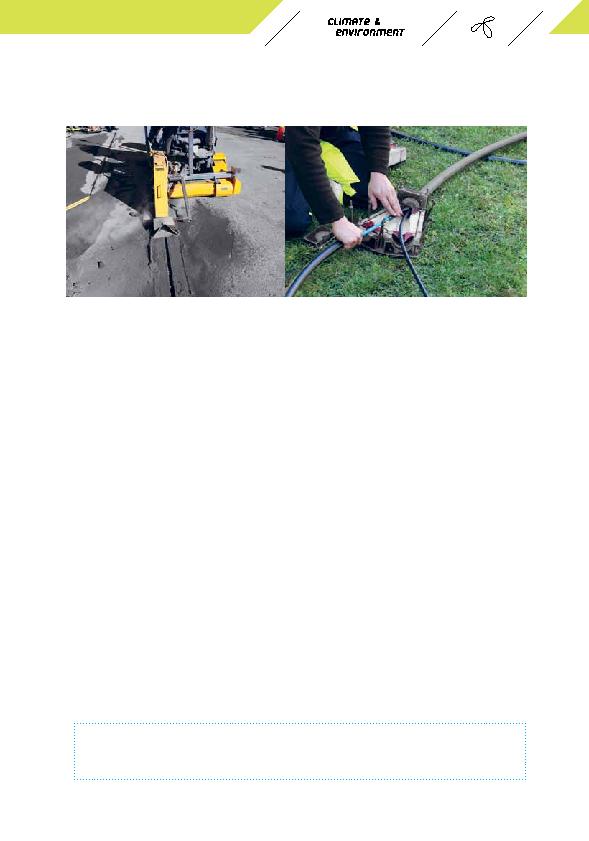
77
Traditional construction methods in 2012
In 2012 Telenor Norway dug approx. 730,000
metres of cable trenches using traditional
construction methods. Approx. 90,000 metres of
this consisted of trenches in asphalted roads.
Micro-trenching in 2012
Using micro-trenching we laid 20,000 metres of
cable in 2012, corresponding to 2 % of the total.
Compared to standard construction methods this
represented a reduction in emissions of 108 tons of
CO2. At the end of 2012 we had orders for a further
13,000 metres of cabling to be laid using
micro-trenching.
CO
2
-reduction in 2012
By using micro-trenching and sub-channeling we reduced our CO
2
emissions by a total of
1,012 tons
in 2012. This corresponds to
5,600,000 km
of car travel.
Compared to traditional excavation micro-trenching reduces CO
2
emissions by
75%
. Sub-channeling reduces CO
2
emissions by as much as
90%
.
Micro-trenching
Sub-channeling
Sub-channeling in 2012
In 2012 we laid 138,000 metres of cables using
sub-channeling, corresponding to 16% of the total.
This represented a reduction in emissions of 904
tons of CO
2
. At the end of 2012 we had orders for a
further 75,000 metres of cabling to be laid using
sub-channeling.
TELENOR NORWAY'S ENVIRONMENTAL MANAGEMENT SYSTEM
Environmental area 1: CO
2
emissions/energy consumption
We shall reduce our own emissions of CO
2
by 30% in the period 2008 to 2017 and our own energy
consumption by 15% in the period 2010 to 2020.
